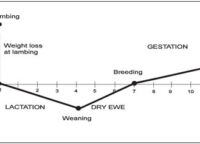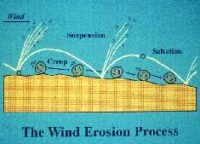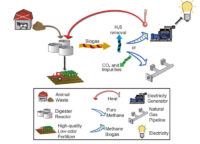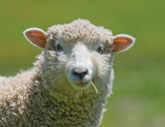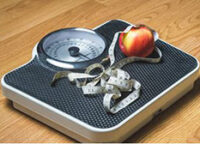- 09, 24, 2015
- Comments Off on Stretching Your Horse’s Hay Supply During Drought – 1.625
- By admin
Stretching Your Horse’s Hay Supply During Drought – 1.625
Print this fact sheet L.K. Warren and P.D. Siciliano*(10/14) Revised by Ragan Adams** Quick Facts… High-fiber roughages should make up the majority of a horse’s diet. Ideally, horses should receive 1.5 to 2.0 percent of their body weight per day as roughage. If grain is needed to maintain body condition, divide the daily portion into […]
Take a Tour- 09, 24, 2015
- Comments Off on Sheep Feeds and Management Guidelines During Drought – 1.633
- By admin
Sheep Feeds and Management Guidelines During Drought – 1.633
Print this fact sheet by Steve LeValley* (4/13) Quick Facts… Extended periods of dry weather or drought generally shorten the season sheep can graze on available forage, which reduces forage quality and can lead to a need for supplemental feeding. Comparisons must be based on energy, protein and water content; silage and other high moisture […]
Take a TourControlling Soil Erosion From Wind – 0.518
Print this fact sheet by T.A. James, R.L. Croissant and G. Peterson1 (8/09) Quick Facts… Vegetative barriers reduce erosion from wind by reducing unsheltered distance across fields. Barriers can protect young, sensitive, high-value crops from damage by blowing soil particles. Combinations of barriers and ridges can reduce residue requirements in conservation compliance plans. Fall-planted cover crops can prevent […]
Take a Tour- 09, 24, 2015
- Comments Off on Feed Composition for Cattle and Sheep – 1.615
- By admin
Feed Composition for Cattle and Sheep – 1.615
Print this fact sheet by T.L. Stanton* (12/14) Revised by S. LeValley** Quick Facts… Obtain and use actual feedstuff analysis whenever possible for ration formulation. If feedstuff compositional data is impossible to determine, tabulated data is the next best source of information. Since moisture content of feeds can vary greatly, it is important to express […]
Take a Tour- 09, 24, 2015
- Comments Off on Anaerobic Digestion of Animal Wastes in Colorado – 1.227
- By admin
Anaerobic Digestion of Animal Wastes in Colorado – 1.227
Print this fact sheet by S. Sharvelle and L. Loetscher* (5/11) Quick Facts… Anaerobic digestion is a waste management solution that has the potential to provide a source of renewable energy. Anaerobic digestion technology converts animal waste to methane biogas, which can be utilized as a renewable source of energy. The end product is a […]
Take a Tour- 09, 24, 2015
- Comments Off on Alternative Feeds for Cattle During Drought – 1.626
- By admin
Alternative Feeds for Cattle During Drought – 1.626
Print this fact sheet R. Baird LeValley* (11/20) Revised by Retta Bruegger, Jenny Beiermann, Frank Garry, Eric McPhail and Seth Urbanowitz** Quick Facts… Drought is a part of the normal production cycle. Dealing with dry periods and decreased feed supplies needs to be part of the overall management plan. In many cases, the best solution […]
Take a Tour- 09, 23, 2015
- Comments Off on Pregnancy Toxemia (Ketosis) in Ewes and Does – 1.630
- By admin
Pregnancy Toxemia (Ketosis) in Ewes and Does – 1.630
Print this fact sheet by S. LeValley1 (8/2010) Quick Facts… Pregnancy toxemia in sheep and goats is also known as pregnancy disease, lambing sickness and twin-lamb/kid disease. The principal cause of pregnancy toxemia is low blood sugar (glucose). Onset of the disease is often triggered by one of several types of stress including nutritional or […]
Take a Tour- 09, 23, 2015
- Comments Off on Nitrate Poisoning – 1.610
- By admin
Nitrate Poisoning – 1.610
Print this fact sheet by J.C. Whittier* (6/11) Quick Facts… Death loss from nitrate is an occasional problem in cattle consuming certain annual forages, particularly sorghum hybrids. Cattle producers should be concerned if rations contain over 5,000 ppm nitrate on a dry matter basis. Avoid poisoning with good management practices. A qualitative check called the […]
Take a Tour- 09, 23, 2015
- Comments Off on Lamb Feedlot Nutrition – 1.613
- By admin
Lamb Feedlot Nutrition – 1.613
Print this fact sheet by T.L. Stanton and S.B. LeValley* (2/14) Quick Facts… Meeting protein, energy, vitamin and mineral requirements is essential for profitable lamb finishing. Feedlot lambs are more efficient when self-fed than when hand-fed twice daily. Lambs fed whole grains have as good or better performance than when they are fed rolled or […]
Take a Tour- 09, 23, 2015
- Comments Off on Weight Management – 9.368
- By admin
Weight Management – 9.368
Print this fact sheet by J. Clifford and J. Curley * (12/19) Quick Facts… Healthy eating and regular physical activity are key to good health. Good health increases confidence, energy and productivity. Behavior change can be accomplished by identifying areas that need improvement, making step-by-step changes, and monitoring progress. The MyPlate method as the basis […]
Take a Tour
